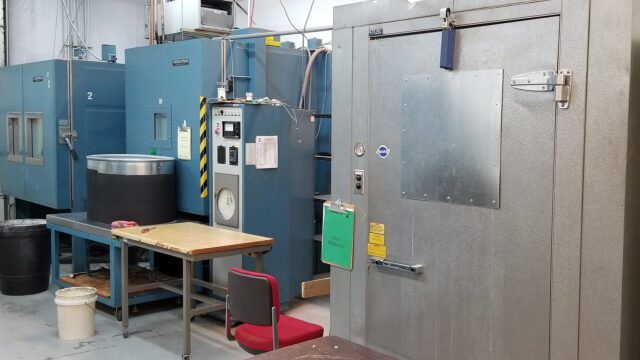
The environment is a complex, ever-changing system that requires stringent testing standards and regulations to ensure its continued health. From large corporations to governments, there are many entities involved in environmental testing.
Without the necessary standards and regulations in place, it would be impossible for these organizations to effectively protect the environment from harm.
This article will explore the role of standards and regulations in environmental testing and how they can help maintain a healthy planet.
We’ll also look at some of the challenges associated with enforcing these laws, as well as potential solutions for improving the effectiveness of environmental protection efforts worldwide.
Overview of Environmental Testing Standards and Regulations

Environmental testing standards and regulations are essential for protecting our planet from the effects of human activities. They provide a framework for setting acceptable limits on pollutant levels in air, water, soil, and other environmental media while ensuring businesses remain compliant with local laws and industry requirements.
These measures also help promote trade between countries by allowing goods produced using similar quality-control protocols to move freely without fear of contamination caused by varying local laws governing pollution control technologies employed at different production sites around the world.
Adherence to existing regulations is critical if businesses wish to maintain successful operations while avoiding costly consequences due to noncompliance penalties invoked by regulatory bodies globally today.
Environmental testing standards and regulations must be regularly monitored to ensure that they remain effective so that organizations can continue to operate securely and responsibly within their respective industries or sectors.
Challenges when Implementing Environmental Testing Standards and Regulations
When implementing environmental testing standards and regulations, several challenges must be taken into consideration. The first is ensuring the accuracy of results. To ensure accurate results, environmental tests must be conducted properly with the right equipment and techniques to capture meaningful data.
Additionally, regular calibration and maintenance of test equipment should also be carried out to maintain the reliability of the readings. Another challenge associated with environmental testing standards and regulations is adherence to safety guidelines.
Safety procedures must be followed during all steps of the testing process as improper handling or use of hazardous materials can lead to serious health risks for personnel handling them or those living nearby.
Lastly, it is essential that adequate training is provided for personnel responsible for carrying out any kind of environmental testing so they know how to interpret the results correctly and take appropriate actions based on their findings.
The Role of Government in Setting Environmental Testing Standards and Regulations

The government plays an integral role in setting standards and regulations for environmental testing. These standards are designed to ensure that the environment is protected from pollutants and other hazardous materials, while still allowing for economic growth.
Government agencies such as the Environmental Protection Agency (EPA) set rules about what types of tests can be done on a sample, how often they must be performed, and which labs have been certified to provide results.
Additionally, governments may create incentives or subsidies to encourage companies to invest in testing technology that meets their requirements. Companies must comply with these regulations or face fines or other penalties if found in violation of them.
As environmental protection becomes increasingly important around the world, governments will continue to play a major part in establishing standards and regulations related to environmental testing.
International Perspectives on Environmental Testing Standards and Regulations
Environmental testing standards and regulations are an important component of international efforts to maintain the health, safety, and quality of our environment. They provide a framework for setting acceptable limits on pollutant levels in air, water, soil, and other environmental media.
These standards can vary from country to country depending on their geographical location or economic situation. However, any global measures taken regarding environmental testing must be implemented fairly across all nations to ensure maximum protection for the planet’s resources.
For these standards to be effective internationally they must be consistently applied with consistent monitoring methods and enforcement procedures established through mutual agreement between countries.
International organizations such as the United Nations Environment Program (UNEP) have been instrumental in guiding how best countries can cooperate when it comes to establishing and enforcing necessary environmental regulations and testing requirements both domestically within individual nations as well as among them.
The importance of having comprehensive regulatory frameworks cannot be understated since they help protect human health by limiting exposure to hazardous pollutants while simultaneously safeguarding our fragile environment from further degradation due to uncontrolled industrial activities or natural disasters such as oil spills or floods.
Furthermore, harmonized international policies also promote trade between countries by allowing goods produced using similar quality-control protocols to move freely without fear of contamination caused by varying local laws governing pollution control technologies employed at different production sites around the world.

Ultimately, governments must come together collaboratively with industry experts to develop uniform rules concerning environmental testing so that everyone benefits from a healthier planet – not just some select few who might take advantage of weaker regulation systems that lack oversight or enforcement capacity.
In this way, we will continue moving towards greater global harmony when it comes to protecting our precious natural resources for future generations!






